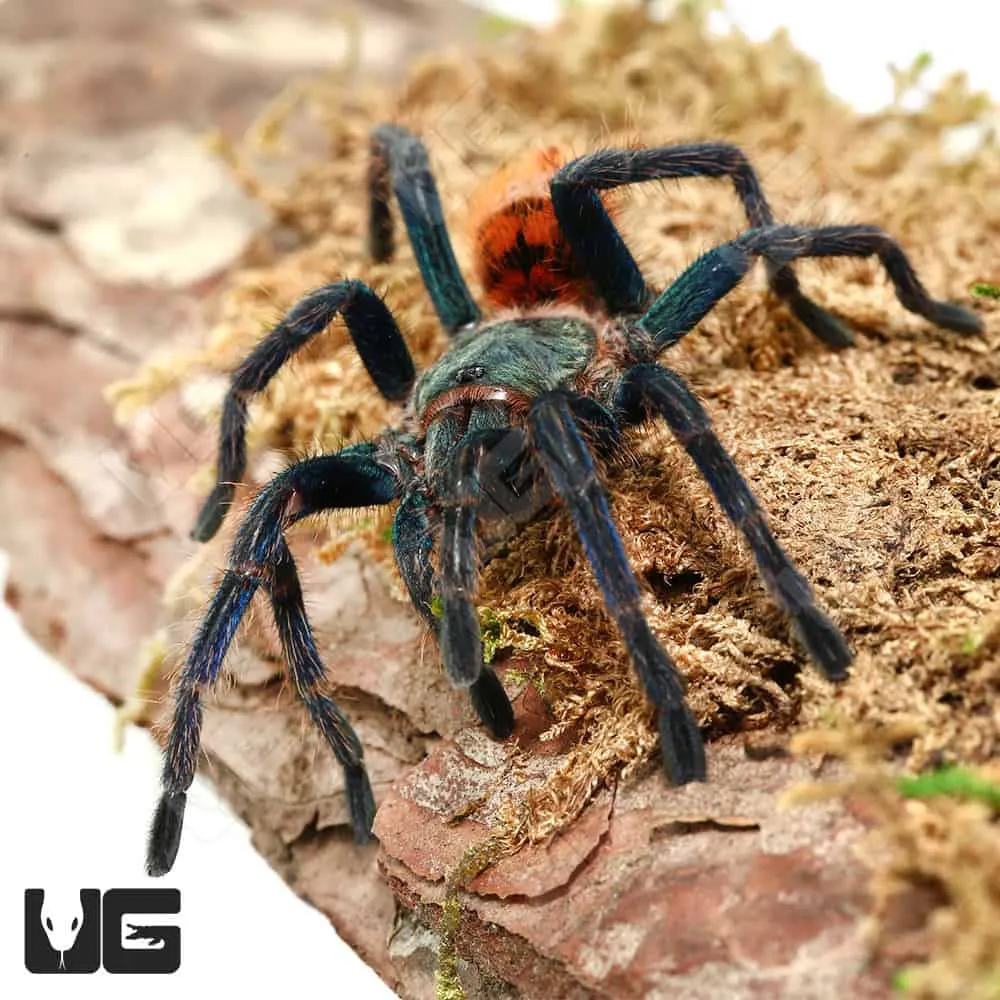The Green Bottle Blue Tarantula (GB Blue), a stunning and vibrant spider, often captures the attention of arachnid enthusiasts. Their striking coloration and relatively docile nature make them popular pets. However, a common question arises among potential owners and curious individuals alike: Are these dazzling creatures poisonous? This article delves into the world of GB Blue tarantulas, exploring their venom, the effects of a bite, and how to safely interact with them.
What is a Green Bottle Blue Tarantula?
Green Bottle Blue Tarantulas, scientifically known as Chromatopelma cyaneopubescens, are a species of tarantula native to the Paraguaná Peninsula in Venezuela. They are highly prized in the pet trade for their unique coloration a mix of metallic blue legs, a green carapace, and a vibrant orange abdomen. Their beauty, coupled with a generally calm temperament, has contributed to their popularity as exotic pets, making them a fascinating subject of study for both hobbyists and researchers alike. Understanding their natural habitat and behavior is crucial for proper care.
Appearance and Characteristics of GB Blue Tarantulas
The GB Blue tarantula is named for its distinctive appearance. Adults exhibit a remarkable contrast of colors. The legs are a brilliant metallic blue, the carapace (the top part of the cephalothorax) is a vibrant green, and the abdomen is a fiery orange. This striking combination makes them one of the most visually appealing tarantula species. They also possess strong urticating hairs on their abdomen, which they can flick off as a defense mechanism. These hairs can cause skin irritation if they come into contact with human skin.
Size and Lifespan
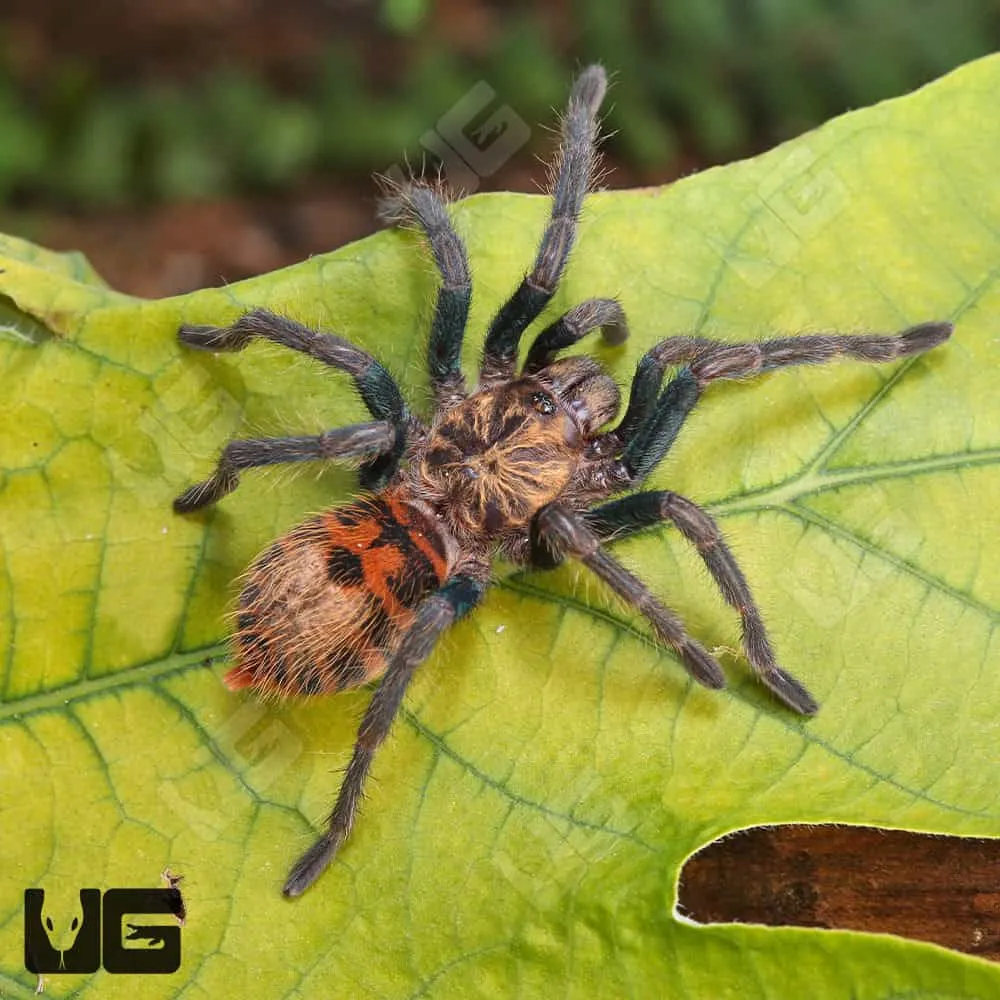
GB Blues are medium-sized tarantulas. Their leg span can reach up to 5-6 inches. They generally live for several years, with females often outliving males. Females can live for up to 12 years, while males typically live for 3-4 years after reaching maturity. The lifespan of a GB Blue is dependent on several factors, including diet, environment, and overall care.
Where Do They Live?
In the wild, GB Blues are native to a specific region in Venezuela. They typically inhabit arid or semi-arid environments, often constructing elaborate webs in shrubs or low-lying vegetation. Their arboreal nature allows them to thrive in these environments, where they can ambush prey. In captivity, they need a well-ventilated terrarium with appropriate substrate and climbing structures to mimic their natural habitat. Proper environmental conditions are essential for their health and well-being.
Are Green Bottle Blue Tarantulas Poisonous?
The term “poisonous” is often misused when discussing tarantulas. It is essential to clarify the difference between venom and poison. GB Blues are venomous, not poisonous. This means they deliver toxins through a bite (venom), while a poisonous animal secretes toxins through its skin or another means of contact.
Venom vs. Poison Differences
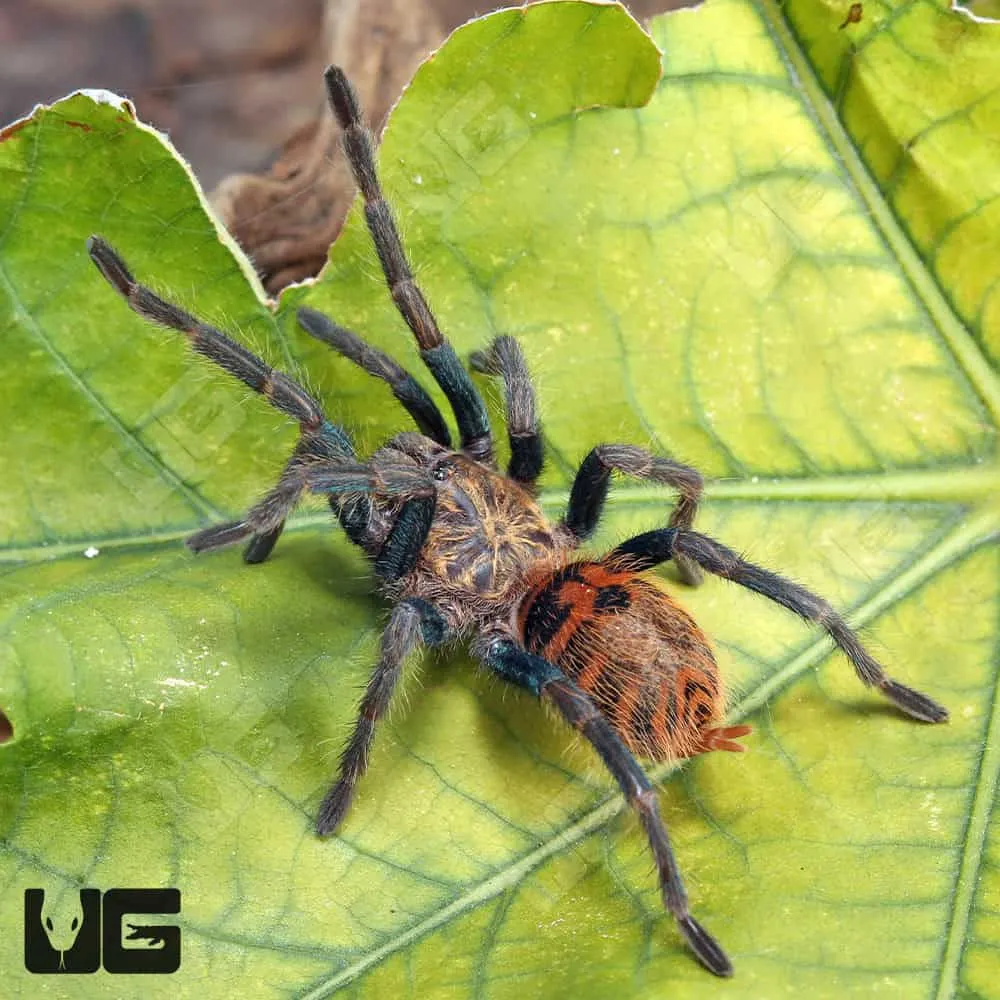
The key distinction lies in how the toxin is delivered. Venomous animals inject toxins, while poisonous animals release toxins through contact or ingestion. For example, a poison dart frog is poisonous because its skin secretes toxins. A rattlesnake is venomous because it injects venom through its fangs. GB Blues are venomous; they inject venom through their fangs during a bite. This venom is used primarily for subduing prey, but also for defense.
The Toxicity of GB Blue Tarantula Venom
The venom of a GB Blue tarantula is considered to be of mild toxicity to humans. While a bite can be painful, the effects are generally not life-threatening. The venom’s primary function is to immobilize or kill small prey items. The composition of the venom includes a mixture of enzymes and toxins designed to achieve this effect. Though the venom is not highly dangerous to humans, bites can still cause discomfort and require proper care.
Symptoms of a GB Blue Tarantula Bite
A bite from a GB Blue tarantula typically results in localized pain, redness, and swelling around the bite site. Other potential symptoms may include muscle cramps, itching, and a general feeling of discomfort. Some individuals might experience more pronounced reactions, such as increased heart rate or nausea. The severity of the symptoms varies based on the amount of venom injected and the individual’s sensitivity.
Severity and Risk Factors
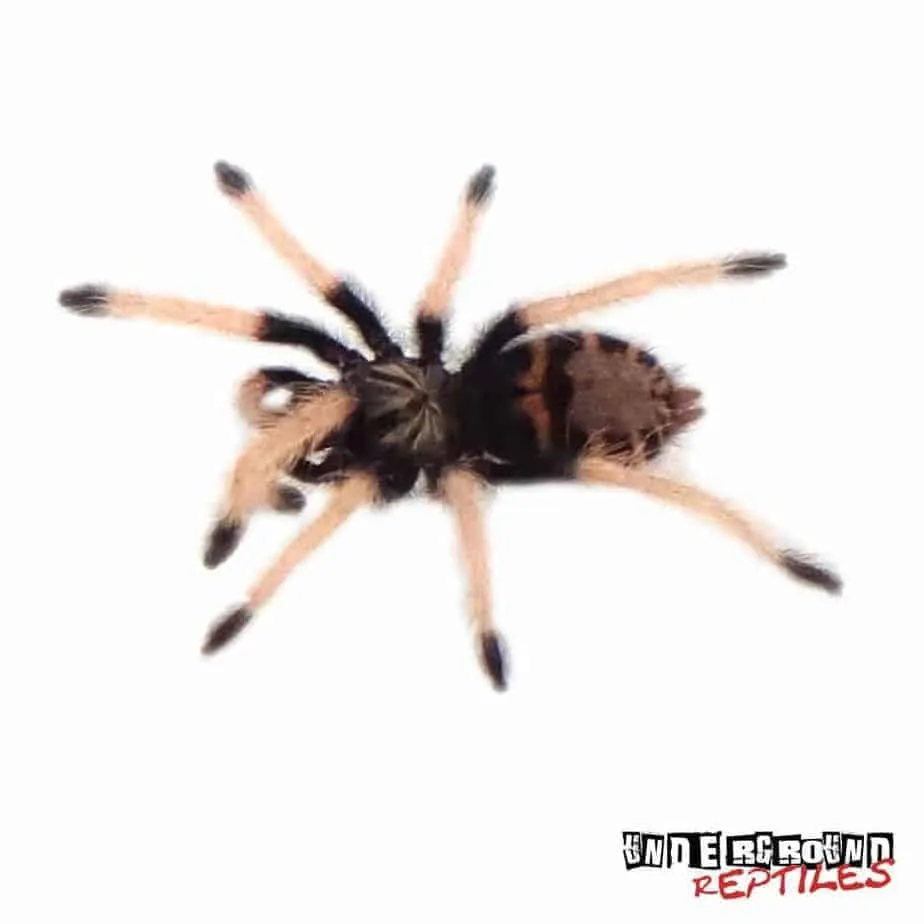
GB Blue tarantula bites are rarely considered medically serious. However, the level of reaction can depend on several factors, including the individual’s health and any allergies. Children and people with existing health conditions may experience more severe reactions. While a bite is unlikely to be fatal, seeking medical advice is always recommended to ensure proper care and to rule out any complications. The risk of a severe reaction is extremely low, but it’s crucial to take precautions.
What To Do If Bitten
If bitten by a GB Blue tarantula, it is essential to remain calm. Immediately clean the bite area with soap and water. Apply a cold compress to reduce swelling and pain. Observe the bite for any signs of infection or severe allergic reaction. Seeking medical attention is advisable, especially if you experience symptoms like difficulty breathing, dizziness, or severe swelling. While GB Blue bites are not typically dangerous, professional medical advice can help manage symptoms and prevent complications.
Treatment and First Aid
Treatment for a GB Blue tarantula bite usually involves symptomatic care. This includes pain relief medication, antihistamines to reduce itching, and observation for any signs of infection. In severe cases, medical professionals may administer corticosteroids to reduce inflammation. Keeping the bite area clean and preventing secondary infections is critical. Following medical advice and providing proper care will ensure a swift recovery.
Top 5 Facts About Green Bottle Blue Tarantula Venom
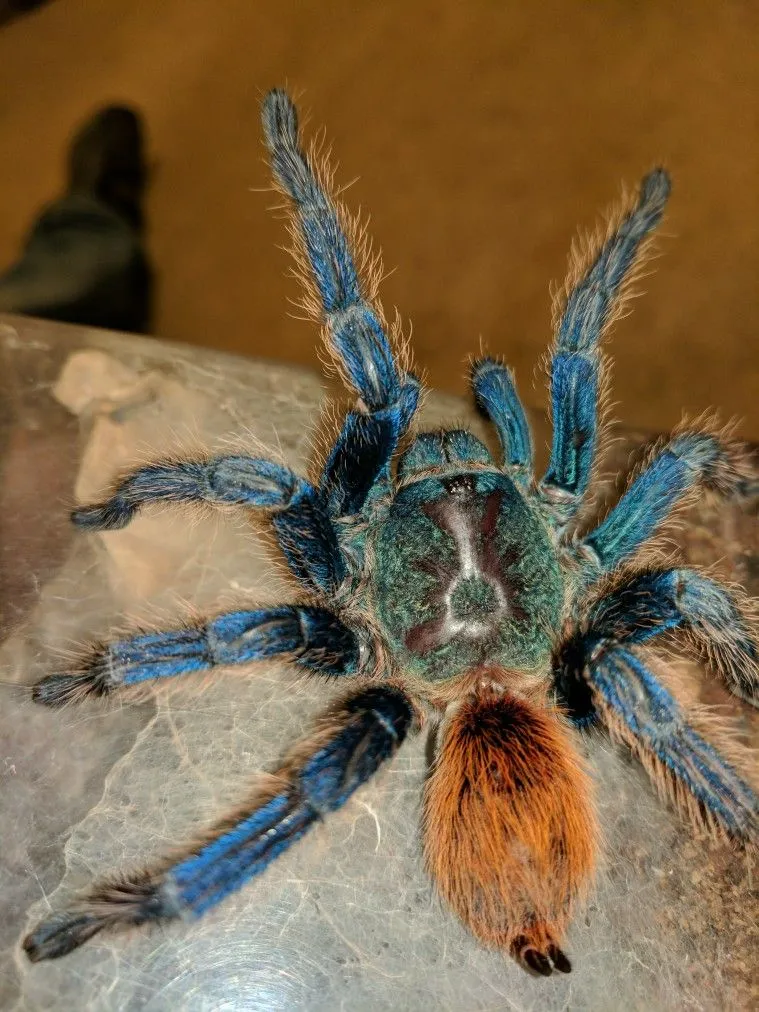
Fact 1: The Venom is Mild
The venom of a GB Blue tarantula is considered relatively mild to humans. The primary effect is localized pain and discomfort, not life-threatening symptoms. This mild nature makes them less dangerous compared to some other venomous creatures, but it doesn’t negate the need for caution. Understanding the mild toxicity underscores their suitability as pets for those with appropriate care experience.
Fact 2: Bite Reaction
The typical reaction to a GB Blue tarantula bite involves immediate pain, redness, and swelling at the bite site. The intensity can vary depending on the individual and the amount of venom injected. While the symptoms are not usually severe, it’s important to monitor the bite and seek medical attention if symptoms worsen or become concerning. Understanding the likely reaction helps in proper first aid and care.
Fact 3: Not Lethal to Humans
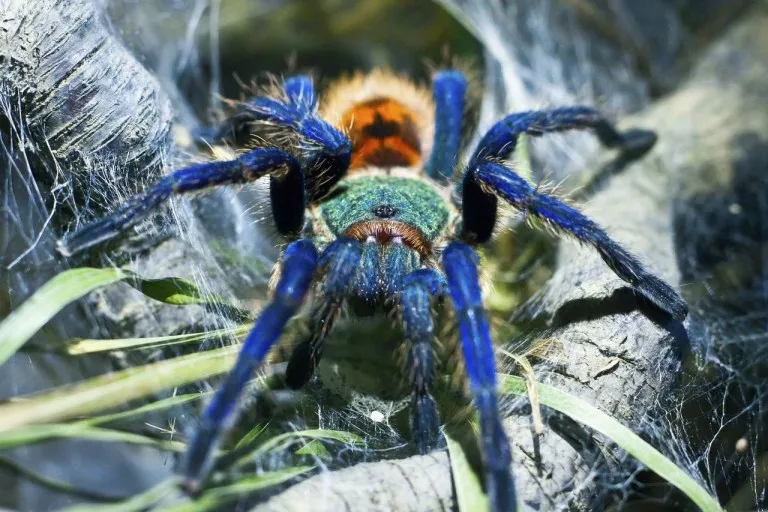
GB Blue tarantula bites are not generally lethal to humans. The venom is not potent enough to cause serious systemic effects or fatalities. This fact is reassuring for pet owners and those who may come into contact with these tarantulas. However, it’s still essential to exercise caution and seek medical advice if bitten to ensure there are no complications or unusual reactions.
Fact 4: Allergy Considerations
Some individuals may have allergic reactions to tarantula venom. Although rare, allergic responses can cause more severe symptoms, such as difficulty breathing, hives, or anaphylaxis. If you experience any severe allergic symptoms after a bite, seek immediate medical attention. Individuals with known allergies should be extra cautious when handling or being near these tarantulas.
Fact 5: No Antivenom Required
There is no specific antivenom available for GB Blue tarantula venom. Treatment focuses on managing the symptoms of the bite. This includes pain relief, reducing inflammation, and preventing infection. Because the venom is not highly potent, antivenom is not necessary. General first aid and medical support can sufficiently address the issue.
How to Safely Handle a Green Bottle Blue Tarantula

Handling a GB Blue tarantula should be approached with caution. These tarantulas can be skittish and may bite if they feel threatened. Always use a soft brush to gently coax the tarantula into a container for relocation. Avoid direct handling unless absolutely necessary. Never make sudden movements, and be aware of their urticating hairs. Proper handling techniques are essential to prevent bites and minimize stress on the tarantula.
Proper Enclosure and Environment
Providing the right enclosure is crucial for the safety of both the tarantula and the handler. A secure terrarium with adequate ventilation and appropriate substrate is necessary. The enclosure should mimic the tarantula’s natural habitat. Ensure the enclosure is escape-proof and has appropriate climbing structures. Maintaining a proper environment minimizes stress, thus reducing the likelihood of defensive behaviors, such as biting.
Feeding and Care
A healthy GB Blue tarantula is less likely to bite. Feed them a varied diet of insects, such as crickets or roaches. Ensure the enclosure has a shallow water dish. Regular monitoring of their environment, including temperature and humidity, is essential. Consistent care and attention to their needs reduce stress and make them less prone to defensive behavior. A well-cared-for tarantula is less likely to bite.
Final Thoughts on GB Blue Tarantula Poison
In conclusion, while GB Blue tarantulas are venomous, their venom is considered mild to humans. Bites can cause localized pain and discomfort, but they are generally not life-threatening. Understanding the difference between venom and poison, knowing the symptoms of a bite, and following proper handling and care guidelines can ensure a safe and enjoyable experience with these beautiful creatures. As with any exotic pet, caution and respect are key to a positive relationship.
